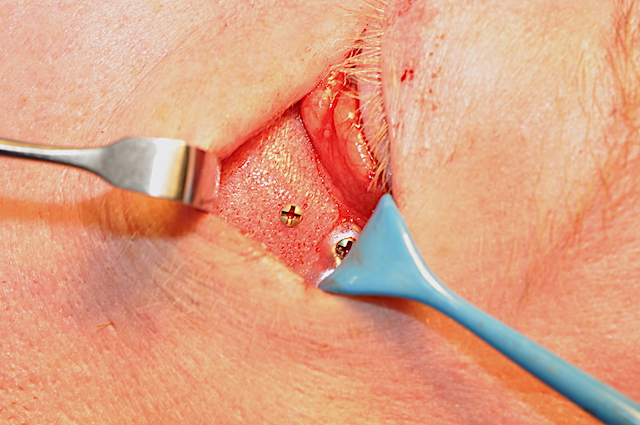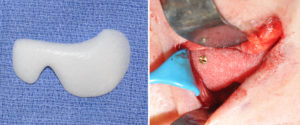Augmentation of the undereye area has become popularized because of the convenience of injectable treatments. For those affected by undereye hollowing and volume deficiency the use of injectable fillers can provide an immediate and profound improvement. But of all the areas of the face to inject the undereye or infraorbital rim area is the most technique sensitive and issues of irregularities, the Tyndall effect and under/over correction are not uncommon. Given the non-permanent effect of most injectable fillers, even if effective, it is not a lifelong treatment approach.
Fat injections is another injectable option for undereye hollowing. While it can also be effective the linear placement of more viscous fat in the thin tissues of the lower eyelid is not without many of the same issues as synthetic fillers…but less forgiving as it is much harder to remove.
Implants have been used infrequently over the years for infraorbital augmentation. Few good implant options have historically existed to treat it in a comprehensive manner. The more recent use of custom infraorbital and infraorbital-malar implants has been a game changer in that regard. Preoperative 3D planning provides an exact and permanent implant method of skeletal augmentation. More times than not an infraorbital-malar augmentation method is chosen for a more complete skeletal correction and to blend the infraorbital augmentation around the corner into the cheeks.
But for many different reasons not every patient opts for the custom implant approach. Standard implants can also be used to try and replicate what a custom implant can do albeit with not the same exact effect. Using standard Medpor infraorbital rim implants connected with standard silicone cheek implants is the ‘poor man’s’ technique for creating an infraorbital-malar augmentation.
While the two materials to create this infraorbital-malar implant construct are not the same, there is no harm in doing so. This is it like connecting two different metals where galvanic current and corrosion can occur. These are simply two different types of plastics (polymers) in which no interactions occurs if in contact.
Dr. Barry Eppley
Indianapolis, Indiana




